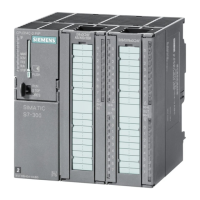Glossary
Fail-Safe Systems
A5E00085588-03
Glossary-3
1oo1 evaluation
Type of sensor evaluation: In 1oo1 evaluation, there is one sensor and it
is connected to the module via a single channel.
Fault tolerance time (i. e.
process safety time)
The time in which the effectiveness of the safety equipment can be
impaired without producing a hazard.
The fault tolerance times are determined by the relevant process
functions.
F-capable CPU
CPU permitted for use in the S7 F/FH
I
I&C
Instrumentation and control
Internal fault
-> Module error
L
Light period
Light periods occur during complete bit pattern tests. This involves test-
related 1 signals being switched to the output by the fail-safe output
module while the output is inactive (output signal "0"). The output is then
switched on briefly (light period). A sufficiently slow actuator will not
respond to this and remains switched off.
M
Module fault
Module-wide fault – Module faults can be external faults (e. g. no load
voltage) or internal faults (e.g. processor failure). An internal error always
requires module replacement.
Module redundancy
An additional, identical module is operated redundantly to increase
availability.
O
OS
Operator station
P
Passivation
Passivation of digital output channels means that the outputs are
deenergized.
Passivation of digital input channels occurs when the inputs transfer the
value "0" to the CPU (via the fail-safe drivers), irrespective of the current
process signal.
Passivation of analog input channels occurs when the inputs transfer a
substitute value or the last valid value to the CPU (via the fail-safe
drivers), irrespective of the current process signal.
PROFIsafe
Safety-related bus profile of PROFIBUS DP/PA for communication
between the fail-safe user program and the fail-safe signal modules in S7
F/FH Systems.
Proof test interval
The period of time after which a component must be put into an error-free
state (i.e. replaced by an unused component or demonstrated to be
completely error-free).

